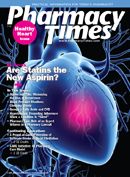Publication
Article
Pharmacy Times
Improving Lives for Less
With nearly 40 million Americans not filling a prescription in 2008, according to IMS Health, affordable generics are even more important in this economic climate.

A Message from Kathleen Jaeger
In marking the 25th anniversary of the Hatch-Waxman Act this past year, the generic industry issued a reminder to the public about how far the industry has come in the past quarter century. We constantly remind ourselves about how much this growth has contributed to our responsibility to enhance public health.
When President Reagan signed the Hatch-Waxman Act 25 years ago, it was estimated that generics would save $1 billion over 10 years. As it turns out, that was a hugely conservative estimate. The fact is that generic medicines have saved an astonishing $734 billion over the last decade—$ 121 billion in savings last year alone.That equates to about $1 billion every 3 days!
Saving the American health care system this amount of money is an extraordinary accomplishment, but savings are not the generic industry’s sole strength. Our member companies are constantly working to ensure that their products meet the highest standards for safety and efficacy because we take our responsibility to produce safe, effective, and affordable medicines very seriously. We know that pharmacists, doctors, patients, and the FDA will accept nothing less than highquality, effective medicines. And that is what we strive to deliver every day.
Dramatic Shifts in Health Behavior
We endeavor to fulfill this mission despite facing numerous obstacles every day at every level in getting safe and effective generics to patients in a timely way. For instance, we are continually outspent by special interests that have the resources to fight us in Congress and in state legislatures across the country on issues such as authorized generics and therapeutic carve-outs. But we keep up our efforts resolutely in meeting our responsibility to increase access to quality care while also reducing health care costs.
Consumer research suggests that the current economic crisis has caused dramatic shifts in health behavior over the past 2 years. One significant fact is that in 2008, according to IMS Health, nearly 40 million Americans decided not to fill a prescription. Research also shows that 1 American in 7 is not receiving needed prescriptions and nearly a quarter of all Americans have reduced the number of times they see their doctor.
Fortunately for patients, affordable generics are available for an increasing number of branded drugs. Since 2004, $59 billion worth of branded drug sales have lost patent protection, with another $90 billion opening for generic competition by the end of 2013. This has helped drive the use of generics to record highs.
Growth of the Generic Market
New IMS data show that nationwide, the generic utilization rate was 71.8% for the first 6 months of 2009, accounting for just 17.4% of the total dollars spent for prescription drugs. Generic prescription volume growth is now at 5.6%, with sales growth at 11.9%. Generic sales have more than tripled over the past 10 years, climbing from $15 billion in 1999 to more than $51 billion in 2008.
The growth in the generic industry has truly been remarkable. This past year, we marked the celebration of our industry’s 25th anniversary with the theme of “Celebrating the Past, Forging the Future.” There is no doubt that we are poised to head into our next 25 years stronger than ever with a continued commitment to improving lives for less. â–







